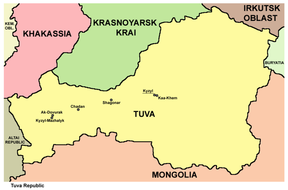Overtone singing or chanting is a guttural style of vocalization that is the oldest form of singing. It uses the throat cavity to produce overtones so that more than one note is heard. By using the lips, tongue, jaw, velum, and larynx, singers can produce different sounds and melodies by just the use of their own bodies. Hums, buzzes and rattles are often part of the sound.
Because of the remoteness of the regions practicing this style of singing, it has been largely unknown until recently. In 2009 there were throat singers performing at the Lowell Folk Festival in Lowell, Massachusetts.
Updated 5/28/13


 In a part of Mongolia called Tuva, throat singing is called Khöömei. There the herdsmen developed different
In a part of Mongolia called Tuva, throat singing is called Khöömei. There the herdsmen developed different





 How I Found My Free Family History Programon 09/05/2013
How I Found My Free Family History Programon 09/05/2013
 Finding a Graveon 09/01/2013
Finding a Graveon 09/01/2013
 Do Border Collies Make Good Pets?on 08/11/2013
Do Border Collies Make Good Pets?on 08/11/2013
 Hubert Patey - an Indentured Servanton 08/02/2013
Hubert Patey - an Indentured Servanton 08/02/2013



Sing to me
Thanks. I'm fascinated by this style of singing. Such a strange sound.
Very interesting videos and info, Lana! Thanks for sharing!
I tell you, some of it gives me goosebumps. But I'm strange that way....lol
Interesting! I've never heard of throat singing.
I think it's one of those ancient things that we'll probably never know how it started. Especially since it's common in at least 3 different cultures around the world.
Very interesting, Lana. It makes me wonder who thought up this type of singing in the first place.
I didn't think you were being silly. It isn't hard to get overtones, but, like a lot of things, it's hard to do well. Droning doesn't require much in the way of carrying a tune. Now those Inuits! WOW. That blows my mind!
I didn't mean to be silly, it seems like a very difficult talent, and one taking practiced skill. I can't carry any sort of tune in any sort of bucket. :) K
The droning doesn't actually hurt your throat. I can't speak for the Inuit style but I've done the overtone singing myself.
And thank you!
Oh my how interesting, the video made my throat hurt and feel a bit horse. Reminded me of when I tried to talk like Alfalfa :)K Very informative piece thanks for broadening our horizons.